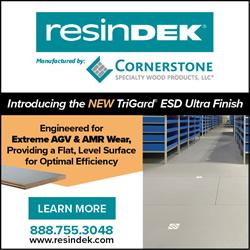The Way to Combine Metal and Plastic: Insert Molding
IM is a popular manufacturing process because it is fast and efficient. It also allows for a high degree of precision, meaning that products made using insert molding are typical of high quality.
Massachusetts Metalcaster Established Over a Century Ago Leaps Forward with 3D Mold Printing
A growing number of companies within the sand casting industry are adopting 3D sand printing to produce high quality parts without tooling. The technology to 3D print molds without changing the actual sand casting process itself is a major advancement for the industry.
Risk Mitigation in Micro Molding
In applications where overall tolerances are measured in microns, there are various ways that micro molders mitigate the risks associated with each step of the design-to-manufacturing cycle.
MICRO-MOLDING: KEY SUPPLIER SELECTON CRITERIA
For companies that are exploring the possibilities that exist for miniaturization of plastic parts and components, there are some seemingly daunting obstacles that exist, not least the vagaries of the micro molding process itself.
Micro Molding - The Need for Collaboration and DfM
This article examines the ways in which companies looking to achieve significant product miniaturization need to approach their product development process, and how they need to adapt their thinking when embracing micro molding.
Manufacturers Replace Metal with Plastic to Reap Benefits of Plastic Resins While Maintaining Integrity of Metals
In today's fast-paced world there is an immense pressure on manufacturers to create a better, faster, stronger, cheaper product, and only those who are willing to adapt and innovate will survive. Manufacturers who've been dragging their heels (or worse, kicking & screaming) are now getting on-board with replacing metal parts with plastic ones.
In-house Packaging Operations Propels Growth for Tropical Trade & Industries N.V.
New blow-molding equipment and custom bottle designs boost sales by 24 percent in a year for Caribbean syrup and essence manufacturer.
Case Study: Buying Time with 3D Printed Tooling
Imagine being able to produce short-runs of end use parts to test a concept or for direct use in just days. How would it feel to be able to bring a product to market faster than the competition?
Records 1 to 8 of 8
Featured Product

ResinDek® TRIGARD® ESD ULTRA FOR HIGH-TRAFFIC ROBOTIC APPLICATIONS
To maximize the productivity of an autonomous mobile robot (AMR) or automatic guided vehicle (AGV) deployment, it's critical to create the optimal environment that allows the vehicles to perform at their peak. For that reason, Cornerstone Specialty Wood Products, LLC® (www.resindek.com) created the TriGard® ESD Ultra finish for its ResinDek® engineered flooring panels. The TriGard ESD Ultra finish is ideal for high-traffic robotic applications characterized by highly repetitive movement patterns and defined travel paths.

.jpg)






